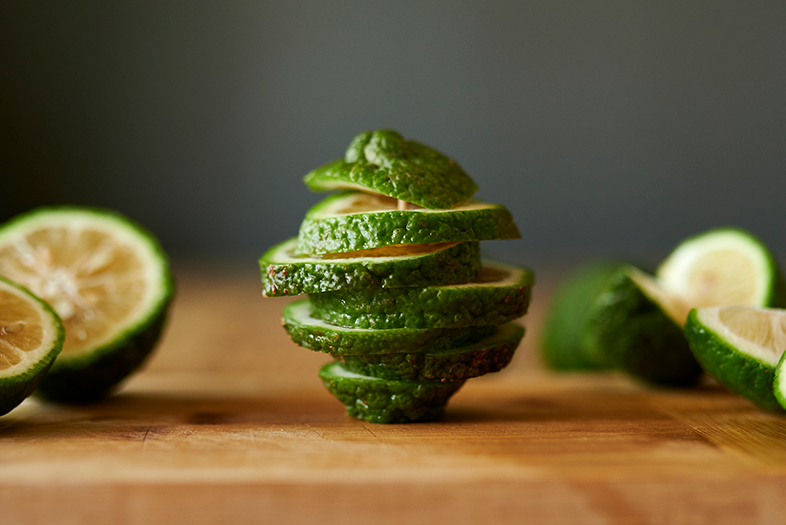Lemon
The acidity that protects
“Limes are typically green, while lemons are yellow – although the national variety of lemon is confusing as it has a green peel.”

Cooking is a journey and it is the ingredients that make up the dishes that dictate the pace. The lemon and the lime, with the acidity that characterizes them, are ingredients seen in any geography. In cocktails or desserts, or to “sharpen” the taste of white meats, both are indispensable.
Of Asian origin, limes are similar to lemons. After all, they belong to the same family of citrus fruits. Perhaps one of the most obvious differences between lemons and limes is their appearance. Limes are typically green, while lemons are yellow – although the national variety of lemon is confusing as it has a green peel. Limes are also usually smaller and rounder than lemons. They can vary in size, but generally measure 3 to 6 centimetres in diameter. In comparison, lemons tend to be 7 to 12 centimetres in diameter and have a more oval or oblong shape.
In these pandemic times, when preventing COVID-19 is done not only through physical distance, masks and alcohol in the hands, the importance of both has redoubled. A cup of juice contains 72.6 mg of vitamin C while the juice of a single fruit contains 13 mg, which makes it a great source of that nutrient.
What’s more, its regular consumption has great antioxidant properties, prevents premature aging and promotes the strengthening of the immune system, in addition to helping to fight kidney stones, which are formed by crystallized calcium, since it breaks these crystals.
Issue 66 Mar/Apr | Download.



































0 Comments